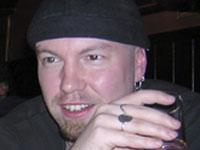Logic, quantum theory and natural language meaning (all in pictures) Department of Computer Science Oxford University, UK We introduce the idea of a process theory, as developed in the textbook [1]. The mathematical underpinning is entirely diagrammatic, in fact, it's category theory in disguise, although accessible pretty much to anyone who has a brain. Conceptually, it involves a logical stance that focusses on the interactions rather than on the description of the individual. It's successes so far are a high-level conceptual underpinning for quantum theory [2,1], as well a framework to reason about meaning in natural language, solving the open problem on how to compute the meaning (not just true or false!) of a sentence given the meaning of its words [3, 2, 4]. This course has no prerequisites except maybe a little bit of linear algebra and an open mind, so in particular no background in quantum theory, nor category theory are required. A Long version is annually given at Oxford University as a first course both on diagrammatic reasoning and quantum computing. After the course you will for example know what quantum teleportation, quantum non-locality, and quantum algorithms are about. And also how powerful diagrammatic reasoning is. You will also understand how meaning of words in natural language becomes meaning of sentences.
|
Bibliography [1] B. Coecke & A. Kissinger (2015, 750 pp) Picturing Quantum Processes. Cambridge University Press. [2] B. Coecke (2012) The logic of quantum mechanics - Take II. arXiv:1204.3458 [3] B. Coecke, M. Sadrzadeh & S. Clark (2010) Mathematical foundations for a compositional distributional model of meaning. Linguistic analysis - Lambek Festschrift. arXiv:1003.4394 [4] M. Sadrzadeh, S. Clark and B. Coecke, (2013) The Frobenius anatomy of word meanings I: subject and object relative pronouns. Journal of Logic and Computation. arXiv:1404.5278 | ||||
